Quartz Crystal Microbalance
Presentation of joint project of companies Krystaly, HK, a.s. and University of Defence, Faculty of Military Health Sciences
The main target of this project was creation of a functional design for diagnosis of celiac disease and quantitative determination of anti-tTG antibodies based on the antigen-antibody reaction. Tissue transglutaminase (tTG) is the most commonly used marker for celiac disease diagnosis. Celiac disease is a hereditary disease manifesting itself in chronic inflammation of the intestinal mucosa and atrophic intestinal mucosa. The disease manifests itself in gluten intolerance. The diet has to be adjusted and gluten-free. The project dealt with design of a biosensor for determination of anti-tTG antibodies from blood with quartz microbalance (QCM – Quartz Crystal Microbalance) coated with bound tTG, selectively binding anti-tTG antibodies from a sample.
The method is based on different physical principle of determination using quartz microbalance with immobilized tTG. Contrary to the standard ELISA method, it is possible to expect significant process acceleration and lower cost with the QCM biosensor, and even the possibility of conducting the determination at doctor’s office or at home.
The piezoelectric crystal market segment is stable and this type of products is irreplaceable in modern technologies and electronic devices manufacturing. It would be risky to introduce another piezoelectric material than piezoelectric quartz. This project is an extension of the portfolio in direction in which there is currently no competition and establishing a production of this type of analysers in the future will stabilize the Krystaly, HK, a.s company.
Methods and results
The design and optimisation of the QCM specific for this project including measurements.
The Krystaly, Hradec Králové, a.s. company was adequate through their technology and equipment to design these QCMs and then consequently adapt them to suit this project.
QCM for the purposes of this project was designed with outer diameter of 20 mm for better sensitivity compared to smaller QCMs used in other applications. The entire research and development in this stage was focused on selecting reliable and repeatable manufacturing technology. Such sensor was not manufactured previously in standard production. The required frequency of the sensor was determined to be 10 MHz and, for this application, it was devised, and during the evaluated year verified, to be plated with Cr + Au. As a possible variation, a Cr + Ag plating was suggested. The final 20 mm diameter of the resonators is defined in the specification as 19 mm +/- max. 1 mm. To ensure sufficient adhesion of the top Au or Ag layer, a base of thin chrome layer is used. The plating is done in high vacuum with ultra-clean metals. The work was focused on calculations of suitable layers, specifically their thickness based on the used device, statistics of repeated manufacturing and validation of these results to create final specification. The base material for this sensor is piezoelectric synthetic quartz (SiO2) in suitable quality and size. The different final diameter of the product also required calculation of the dimensions of the imported base material, which is different from the standard requirements. The final dimensions were calculated, negotiated with the supplier, the material imported, validated in the production and subsequently attested with the suggested technology.
The final part of the project was measurement of the parameters of these newly developed 20 mm sensors in the manufacturer’s, Krystaly, Hradec Králové, a.s., premises. During the year 2018, a group of involved co-operators designed oscillator schematics for parameter measurement and created a sample prototype of this measuring oscillator. In the Krystaly, HK, a.s. company, where there are standardly guaranteed repeatable reproducible parameters, was also started a research and development of a holder for the QCM for repeated use. There were also designed and verified parts of this holder.
The finished set:
- Holder for the inserted QMC monitor crystal
- Oscillator for frequency measurement – possibility of a viewing device connection
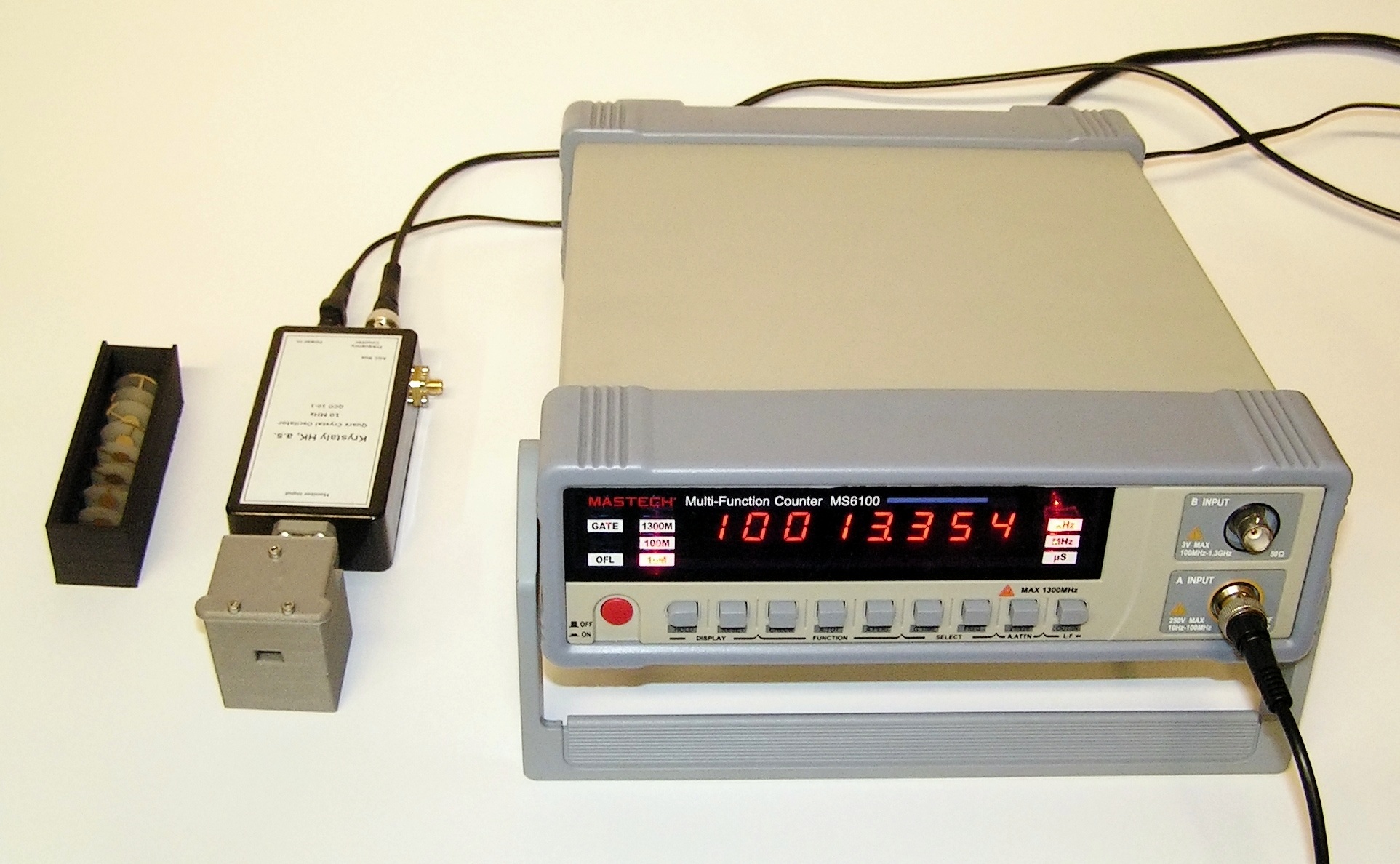
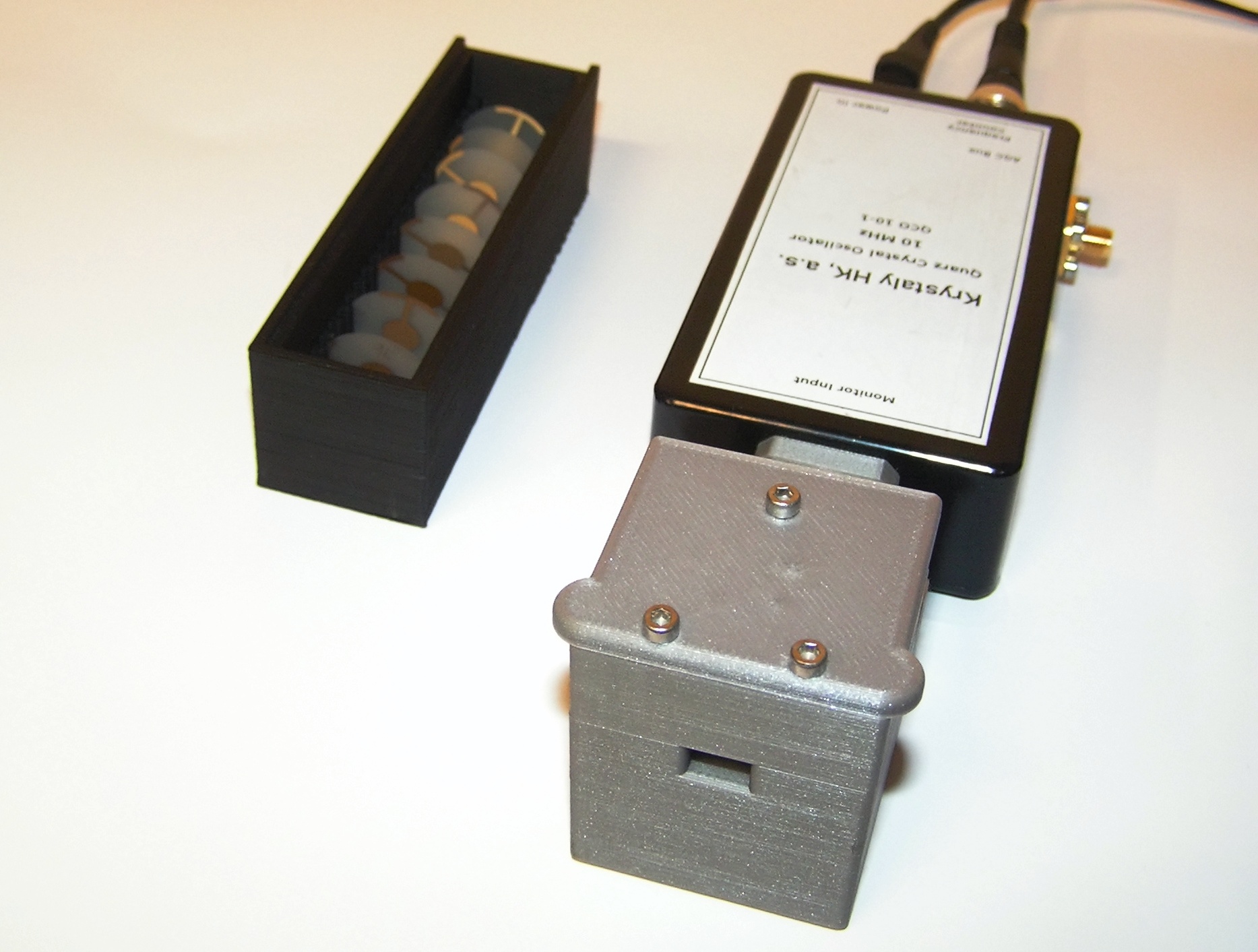

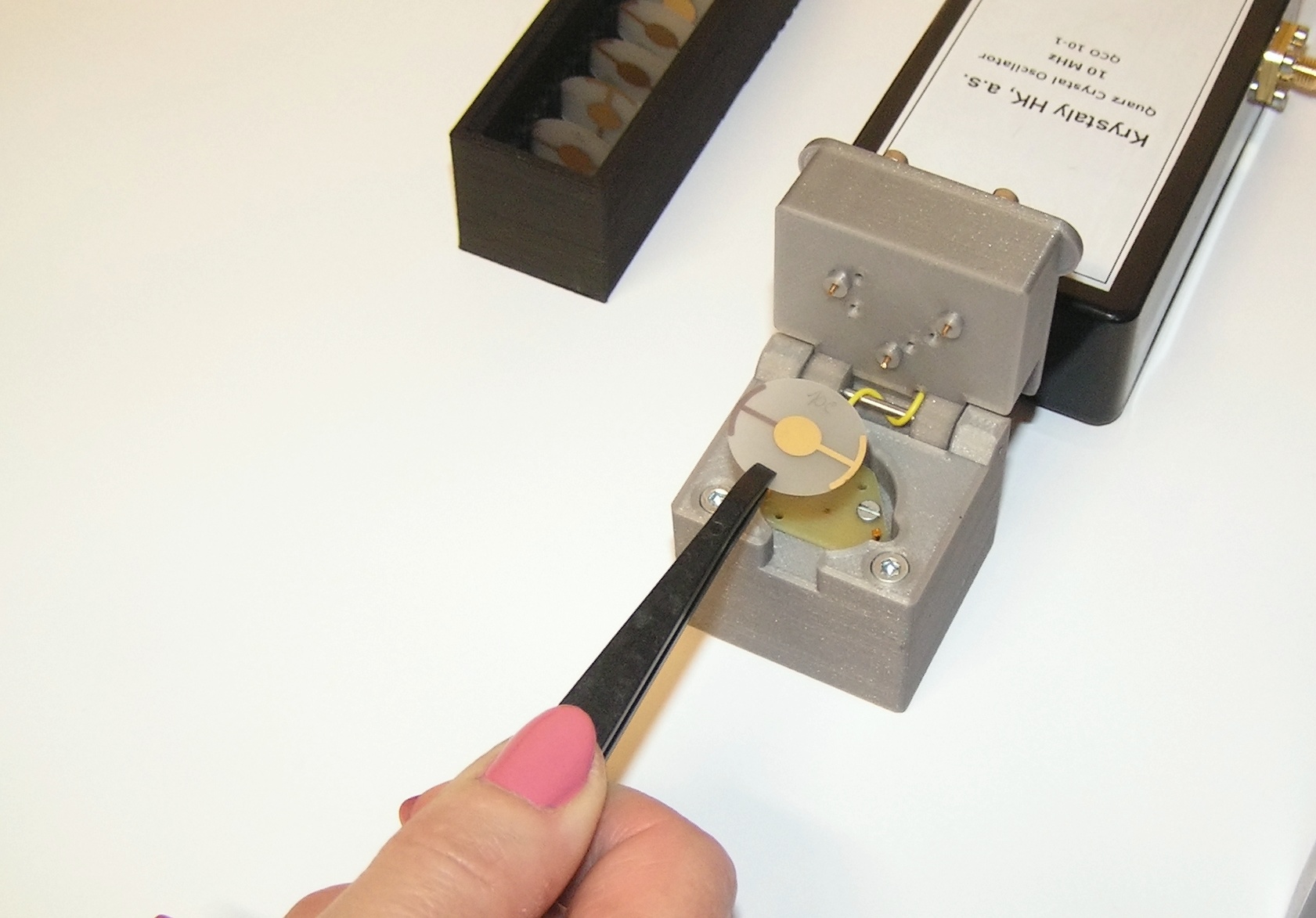
The results and outputs of the mentioned period (2017-2019)
The Krystaly company provided production of the QCM sensors according to the needs of the solution team. The University of Defence provided verification of the sensor functionality in real environment sample conditions and compared the acquired results with results from the reference method. Both institutions cooperated on the functional sample creation.
The functionality of the entire solution was ensured by the final applied layer on the sensor. It was developed and applied by the Faculty. After reaction of the final layer with the blood sample, the result is a frequency change of the displayed oscillator frequency. Approximate resulting frequency is pictured in the picture above.
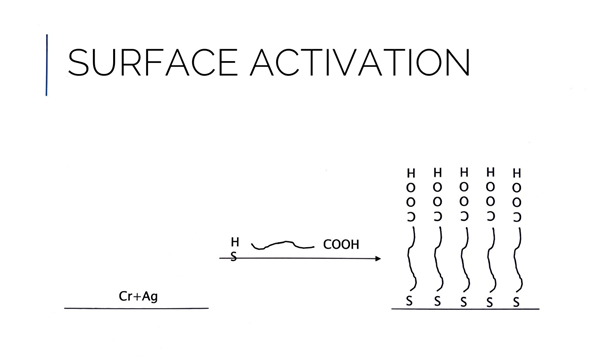
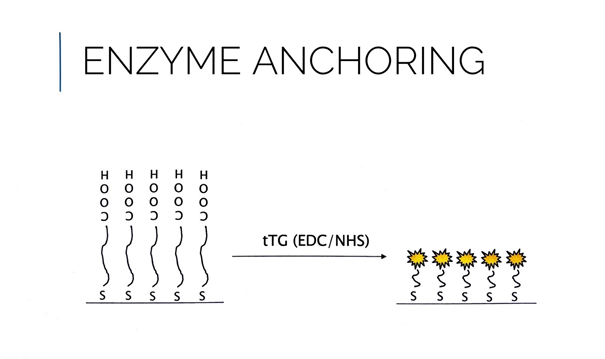
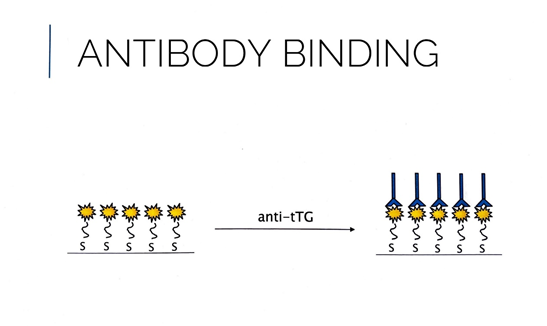
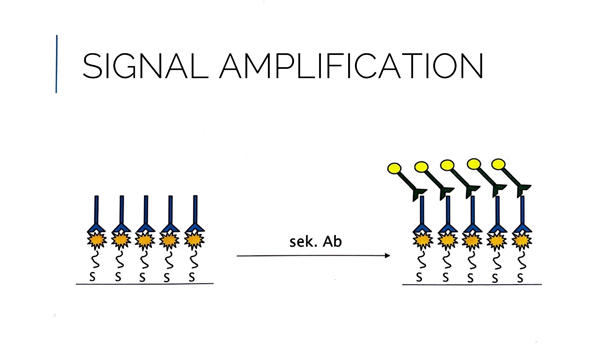
The result is fast determination – YES/NO
The set presented here will be offered for other uses, for example:
- Educational device for schools
- Research institutes
- Other – microbalance measurement of anything
Published results
- Publication Piezoelectric Immunosensor for Tissue Transglutaminase Antibodies Determination for Celiac Disease Diagnostic and Comparison with ELISA Method, J. Elecrochem. Sci., 15 (2020) 5154 – 5165, doi: 10.20964 / 2020.06.36
- Publication Overview of Piezoelectric Biosensors, Immunosensors and DNA Sensors and Their Applications, Materials 2018, 11, 448; doi: 10.3390 / ma11030448
- Publication The Determination of Human Albumin by a Quartz Crystal Microbalance Immunosensor, J. Electrochem. Sci., 13 (2018) 8471 – 8480, doi: 10.20964 /2018.09.14